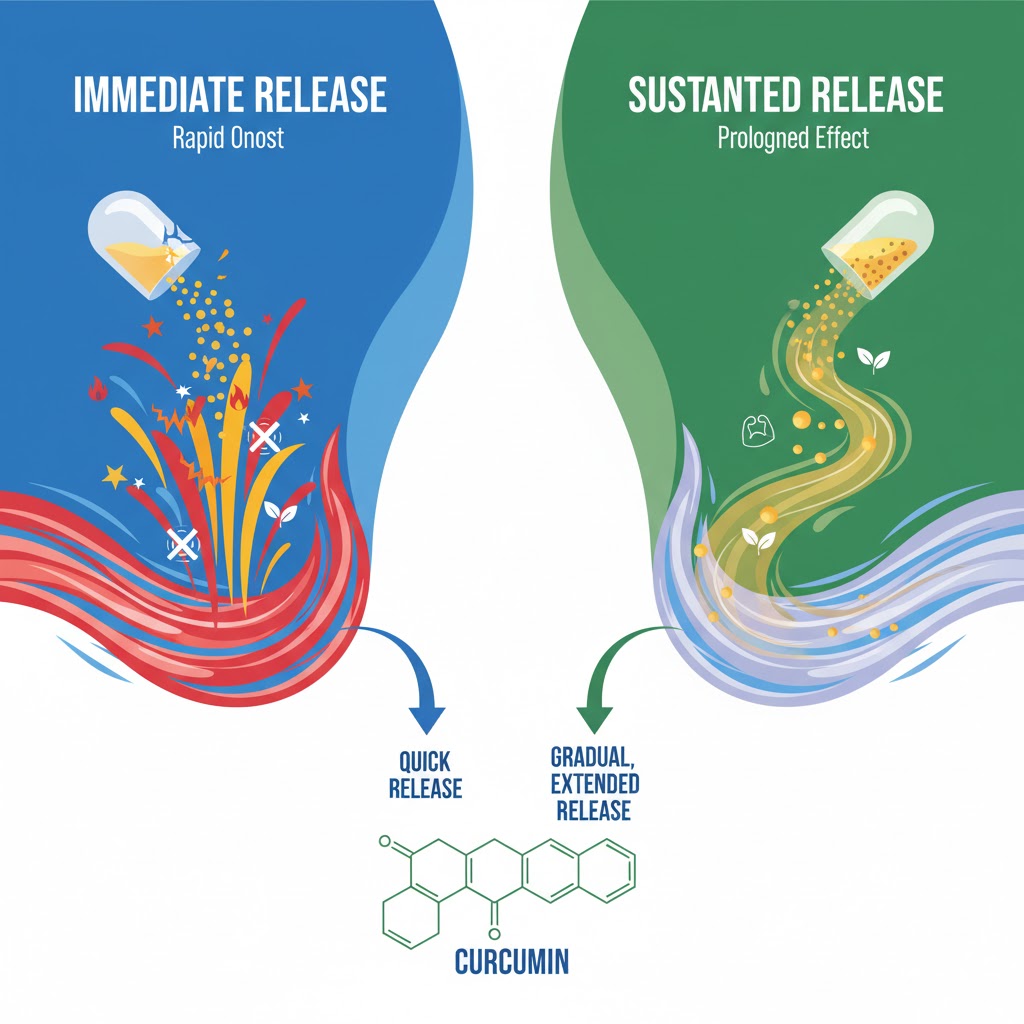
Curcumin, the active compound in turmeric, is well-known for its anti-inflammatory, antioxidant and joint-supporting properties. However, the way it is delivered in the body immediate-release vs. sustained-release can significantly affect how it works. Understanding these differences helps you use curcumin effectively, whether for quick relief or long-term support.
Immediate-release curcumin is designed to dissolve quickly in the digestive system, entering the bloodstream rapidly. This makes it ideal for acute pain, post-exercise muscle soreness, or sudden joint stiffness. Its effects can be felt within hours, helping reduce discomfort quickly.
The downside is that immediate-release curcumin is metabolized and cleared from the body fast, meaning its effects are short-lived. Repeated doses may be necessary to maintain relief, but it works well when you need fast support, such as after intense physical activity or flare-ups.
Sustained-release curcumin is formulated to release gradually over several hours. This allows for consistent levels in the bloodstream, which is important for controlling inflammation over a longer period.
It is especially beneficial for chronic conditions, such as arthritis, or for anyone looking to maintain joint comfort and mobility throughout the day. Unlike immediate-release formulations, sustained-release curcumin does not provide rapid pain relief but supports ongoing modulation of inflammatory pathways such as NF-κB, TNF-α and COX-2.
By maintaining steady curcumin levels, this approach helps reduce inflammation continuously and can protect tissues from long-term damage.
Immediate-release curcumin works best for short-term relief, helping manage sudden soreness or acute inflammation. In contrast, sustained-release curcumin is better suited for long-term support, keeping inflammation under control and supporting overall joint and muscle health.
Some people may even benefit from combining both types: using immediate-release for acute discomfort and sustained-release to maintain continuous support for chronic conditions. This strategy ensures that curcumin is available both when rapid relief is needed and for ongoing health management.
Research emphasizes the importance of plasma concentration and retention. Short bursts of curcumin may reduce pain temporarily, but sustained exposure ensures that inflammatory pathways are consistently modulated. Studies show that advanced formulations, like phytosomes, micelles, or nanoparticles, enhance absorption and prolong curcumin presence in the body, bridging the gap between immediate and sustained effects.
Clinical evidence supports these strategies. Immediate-release curcumin has been shown to reduce post-exercise muscle soreness and markers of muscle damage, while sustained-release forms have improved long-term joint function and reduced chronic inflammation markers.
Curcumin is more than a supplement; it is a strategic tool for managing inflammation and supporting recovery. By understanding the differences between immediate and sustained-release formulations, you can use it more effectively for both short-term relief and long-term health.